Brisket Made From What Cut of Beef
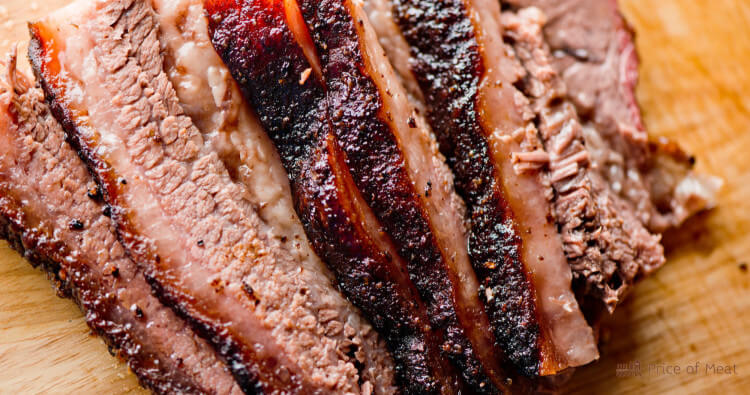
Brisket is not your everyday cut of beef. In America, smoked brisket is most known for its association with southern BBQ (especially Texas barbecue).
However, brisket is often the main ingredient in several other cuisines. One great example is pho, a specialized Vietnamese soup that blends broth, noodles, rice, vegetables and herbs, and meat – including brisket.
Like filet mignon, sirloin, chuck, bavette, or ribeye, brisket is a particular portion of beef, a beef cut from the pectoral area of a cow.
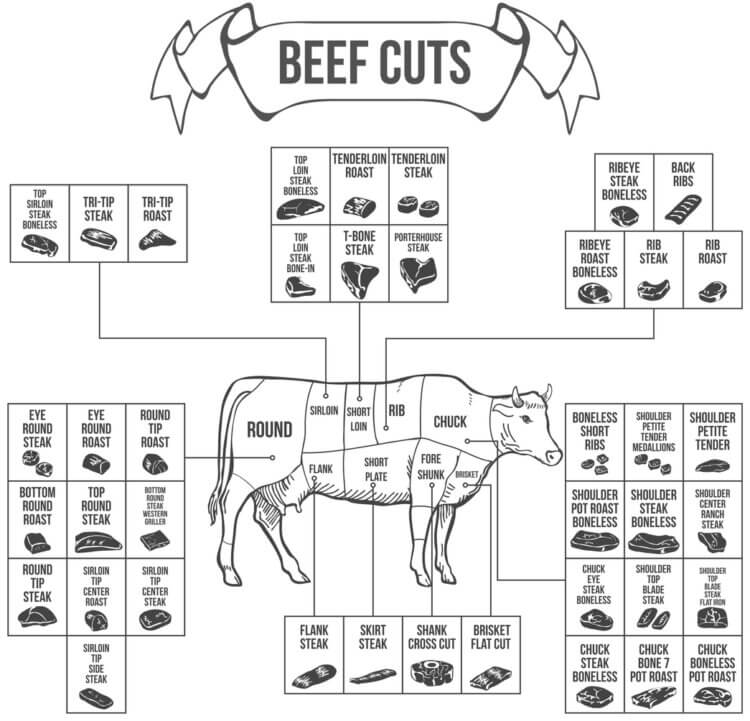
However, cuts of brisket can also be found on pigs, lamb, bison, and even elk/deer.
Flat Cut Brisket
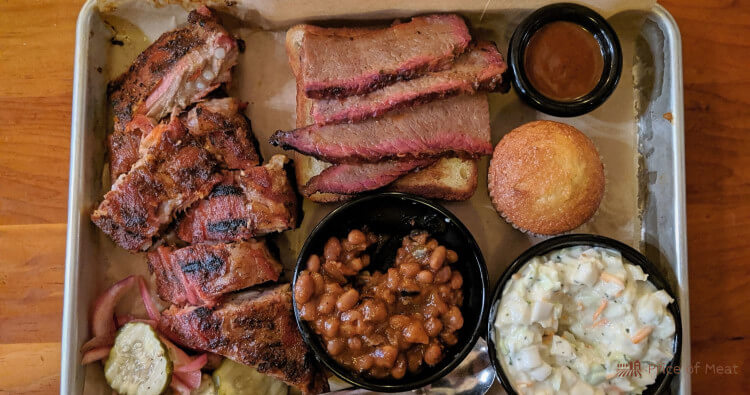
Flat cut briskets are generally the most common type of cut, easy to slice, and juicier than the point cut. The flat cut is usually the larger end of the brisket, but they're known to be lean and thin, usually with a cushion of fat to help keep the brisket moist.
Flat in shape as its name would suggest, the flat cut had origins in the Jewish community long before it made its home in Texas barbeque.
Historically, Jewish celebrations like Rosh Hashanah, Passover, Hanukkah, and Shabbat all included beef or veal brisket as a part of the holiday meal, excluding pork brisket as the Jewish community does not consume pork.
The flat-cut trend originated in Europe, in the Ashkenazi Jewish community. In Jewish cuisine, you cook the brisket by smoking it.
Nowadays, you can cook flat-cut briskets with grills, ovens, smokers, and slow cookers.
Point Cut Brisket
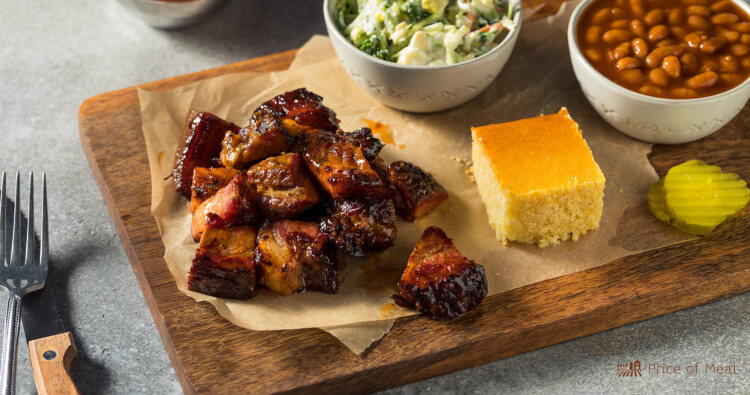
Opposite the flat cut, the brisket point is the smaller piece of meat. The point contains more fatty tissue and also holds more flavor than the thinner flat cut. A point will always be the second cut of brisket after trimming.
Because of their high-fat content (really more of a fat cap), people will tend to reserve point-cut briskets for sandwiches by grinding or pulling the meat.
However, like the flat cut, you can prepare a point-cut brisket by roasting, smoking, grilling, or barbecuing the meat. The optimal temperature for slow cooking a point brisket is about 275 degrees. Pitmasters will often make "burnt ends" with the point cut in a plate of BBQ brisket.
Beef Brisket
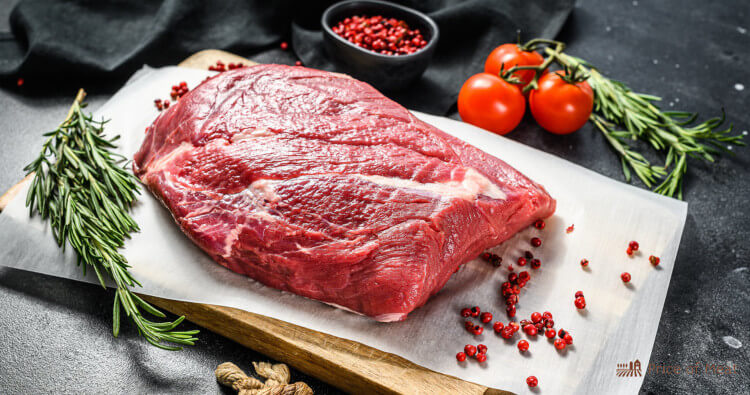
When most people think of brisket, beef is the first thing that comes to mind. There are several different recipes for beef brisket, including barbeque, smoked, slow-cooked, and so on.
As previously mentioned, beef briskets are often cut in two. When the flat cut and point cut are left together, it is referred to as a full packer brisket.
A full packer can constitute between eight and twenty pounds of beef. A cut of full-packer beef brisket will often be roasted or slow-cooked, since it's naturally a tough ccut.
BBQ Beef Brisket Recipe
For this recipe, be sure you have a working barbecue with a lid.
Ingredients:
- Your choice of flat or point cut brisket
- One tablespoon of Kosher salt
- One tablespoon of brown sugar
- One tablespoon of dried shallots
- Two teaspoons of garlic powder
- Two teaspoons of smoked paprika
- One teaspoon of cayenne pepper
Recipe:
- Start with room temperature brisket
- Turn on one side of the barbecue grill to low heat between 250 and 300 degrees Fahrenheit
- Mix the kosher salt, brown sugar, shallots, garlic powder, paprika, and cayenne pepper in a bowl
- Rub the mixture into the brisket cut
- Move the raw brisket onto a sheet pan with the fattier side facing up
- Lay the brisket on the cool side of the grill to start cooking the brisket
- Close the grill and cook for up to 4 hours or until the brisket is tender
- Check and flip occasionally until done
- Let brisket cut sit for up to 10 minutes
- Serve!
You can add to this recipe by mixing additional flavors and sauces. If you want to smoke the beef brisket, the type of wood you use will have a heavy influence on the flavor. The more common wood varieties used to smoke brisket include hickory, apple, and oak.
Pork Brisket
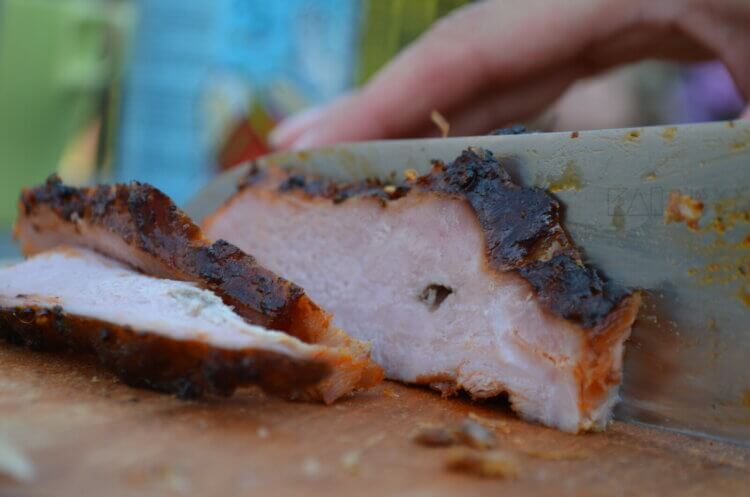
Pork brisket has two cuts similar to beef brisket. The difference between beef and pork brisket is where the cuts reside.
Beef brisket allows for the flat cut or leaner and thinner cut to be the first cut. Pork brisket is the opposite. The first cut becomes the point cut or fattier cut.
In contrast, the second cut is the flat cut or the leaner cut of brisket.
Pork brisket can be cooked similarly to beef brisket, but it's also wonderful when braised.
Oven Roasted Pork Brisket Recipe
Ingredients:
- Your choice of pork brisket cut
- One cup of broth or water
- Two onions
- One teaspoon smoked paprika
- One teaspoon onion powder
- One teaspoon Kosher salt
- Half a teaspoon ground black pepper
Recipe:
- Preheat the oven to 300 degrees Fahrenheit
- Allow pork brisket cut to come to room temperature
- Combine the smoked paprika, onion powder, kosher salt, and ground pepper in a bowl
- Apply the mixture to the pork brisket cut
- Place pork brisket cut in an oven-safe pan
- Add onions and broth or water to the pan
- Place foil over the pan
- Roast the pork brisket for up to two hours
- Let it sit up to five minutes
- Serve
Lamb Brisket
Lamb brisket is derived from the ribs. Unlike beef and pork brisket, lamb brisket is a single cut like a full packer beef brisket. Lamb brisket can also be referred to as the lamb breast.
Similar to other cuts of lamb, lamb brisket has a very strong, distinct flavor. Often, people will consider it "gamey," so it may not be the first choice if you're just trying brisket for the first time.
Lamb also takes on the flavor of whatever you season it with very well. Act with caution when seasoning your brisket so that you end up with the flavor you prefer, and not something overpowering.
Braised Lamb Brisket Recipe
Because lamb takes on other flavors well, this recipe allows you to add as much or as little seasoning as you prefer.
Ingredients:
- Your choice of lamb brisket cut
- Two onions
- Two to three cups of chicken broth
- Salt, as needed
- Pepper, as needed
Recipe:
- Preheat the oven to 325 degrees Fahrenheit
- Remove excess fat from your lamb brisket cut
- Add salt and pepper to the lamb brisket cut, to taste
- Slice both large onions
- Add sliced onions to an oven-safe dish
- Place the lamb brisket cut directly above the sliced onions
- Pour in the chicken broth, covering all the onions and at least half of the lamb brisket
- Cover with foil
- Cook up to two and a half hours
- Remove foil
- Cook an additional 30 minutes
- Serve hot
Veal Brisket
Veal brisket is very similar to beef brisket for obvious reasons: beef comes from an adult cow whereas the veal comes from the calf. The main difference between beef and veal is that a veal brisket is much thinner than a beef one.
The veal brisket comes from the breast of the calf and contains bones, although you can buy a deboned one or debone it yourself.
A full-sized veal brisket is roughly half the size of a full beef brisket.
Venison Brisket
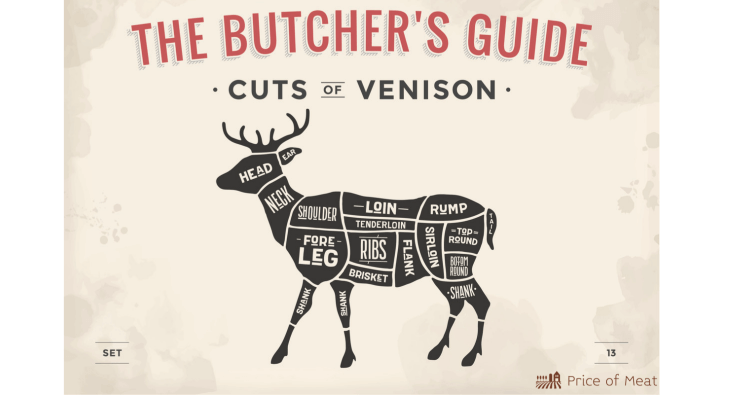
Venison brisket from a deer or elk (or reindeer!) also comes from the breast area of the animal. Like flat-cut beef brisket, venison brisket is a thin cut of meat. It's also smaller and leaner than beef brisket.
Although venison brisket is harder to get cuts from, it has some great advantages. Fajitas, burgers, and even sausages are some of the best dishes where venison brisket is used.
Venison brisket differs from other types of brisket in that you can cook it with a higher heat of about 300 to 250 degrees Fahrenheit.
Like lamb brisket, venison brisket has a strong, gamey taste. It will also take on the flavor of any seasonings you use, so be careful when adding large portions of spices.
Slow Cooker Venison Brisket Recipe
This version of slow-cooked venison brisket does not include other vegetables, but you can certainly throw in some to your liking.
Ingredients:
- Venison brisket flat cut
- Salt, to taste
- Pepper, to taste
- Any additional seasoning, to taste
- Two tablespoons of butter
- Two onions
Recipe:
- Remove the layer of fat from your brisket
- Season the brisket with your desired spices
- Let the brisket sit for ten minutes to soak in the flavor
- Place the brisket in your slow cooker
- Add in the butter
- Slice the onions and add them to the slow cooker
- Cook for four to six hours on high
- Remove and serve
Brisket vs. Corned Beef
Corned beef is a common sandwich filling made from beef brisket. Historically, beef brisket would undergo tenderization from a salt solution (or with a meat tenderizer) to help break down tough fat and make the meat easier to cook and slice.
Though this method is no longer as popular as it once was, corned beef undergoes a similar treatment.
In today's market, corned beef begins as beef brisket before then being placed in a salt solution to brine. After brining, a butcher slices the brisket into what is known as corned beef.
The primary requirement for corned beef is that it comes from a cut of beef cured in salt, as the cure will provide the corned beef with its signature flavor.
Though you do not need to use brisket to make corned beef, it is the traditional method, especially among Jewish cuisine.
Often, Jewish delis will sell both beef brisket and corned beef made from beef brisket. It's cook to buy it since it's easy to overcook and can be tough like brisket.
FAQs about Brisket
Below are some frequently asked questions about brisket.
What cut of brisket is best?
Though both the flat cut and the point cut can give you some tasty meals, people generally prefer the flat cut of brisket. The flat cut is often juicier than the point cut due to the layer of fat that accompanies it. It's also easier to prepare and slice.
In contrast, the point cut tends to be more flavorful but has more fat throughout the meat, which can be difficult to chew. Often, people prefer a point cut of brisket for ground meat, choosing the flat cut as the main course of a full meal.
What kind of meat do you use for brisket?
To obtain a brisket, choose meat from the lower chest or breast of the animal. You can use meat from several animals, including beef, veal, lamb, and venison. Though generally, briskets will taste similar from animal to animal, lamb and venison tend to be leaner meats with a gamier taste.
What are the three grades of brisket?
The three grades of brisket from lowest to highest are Select, Choice, and Prime. Each grade has three sub-categories called Lower, Middle, and Upper. The higher grades of brisket will have more fat marbling, which will contribute to flavor and moisture for a tastier and juicier brisket.
Is a corned beef brisket the same as a beef brisket?
Corned beef briskets are not the same as beef briskets. Simple beef briskets are slabs of meat taken from the breast area of a cow. Corned beef briskets are also taken from that area of a cow, but they then undergo a soaking in brine or a salt solution to create the distinct flavor of corned beef.
Is chuck the same as brisket?
No, a chuck is not the same as a brisket. Though they are both cuts of meat taken from an animal, they are not the same cuts. A chuck roast comes from the shoulder of the cow, whereas the brisket comes from the breast or lower chest area. The brisket will also have much more fat than the chuck, affecting the taste and moisture.
Is brisket a cow or a pig?
Brisket can be from either a cow or a pig, as it is a cut of meat. The brisket is from the breast or lower chest of a cow, pig, sheep, or any animal used for eating.
Final Thoughts
The brisket can be a time-consuming and difficult piece of meat to cook. However, the high fat content makes it a flavorful and juicy cut of meat, making it a favorite all across North America.
Although it began as a traditional Jewish dish, the brisket has evolved into a classic family meal and barbecue staple.
Source: https://www.priceofmeat.com/2309/types-of-brisket/
0 Response to "Brisket Made From What Cut of Beef"
Post a Comment